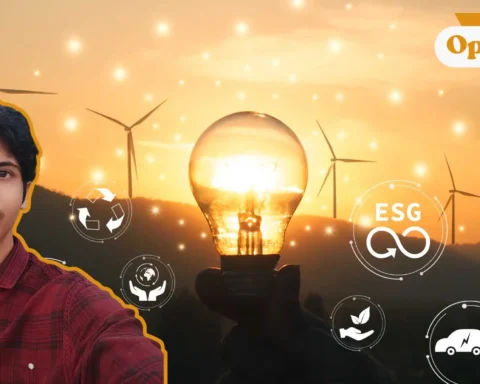India, despite its dynamic economy and demographic dividend, continues to face the persistent challenge of unemployment. Economists have also noted that the unemployment rate in India has been fluctuating: it fell to 5.1 percent in August 2025 but stood at 5.6 percent only a month earlier. Despite these positive numbers, in India, unemployment is deeply rooted in structural factors and policy missteps. For many citizens, the unemployment in India is not only a number, it is about livelihood, aspirations, and social stability.
Table of Contents
Understanding Unemployment in India
In India, the issue of unemployment is the result of the complicated interaction between macroeconomic phenomena, demographic factors, and industry disequilibrium (Trading Economics). Although people are employed as the economy expands, most of them experience structural unemployment in India, a lack of match between their skills and the available opportunities. The agricultural industry is one of the sectors where structural unemployment is observed, as it employs nearly half of India’s workers but generates only about 15 percent of the country’s GDP, leaving many of them underemployed and disgruntled (Indian Express).
Is Unemployment in India a Structural Issue?
The theory that unemployment in India is more of a structural issue is supported by both the statistics and reality on the ground. The youth unemployment is particularly high in India, as the number of unemployed approaches double digits. The lack of relevant skills among the educated youth to meet the needs of the employers shows the lack of correlation between education and the job market. Labor market rigidities, geographical mismatch, seasonal work, and regulatory hurdles contribute to the spread of unemployment.
Moreover, the rural-urban gap is very large. In India, the unemployment rate is lower in rural areas than in urban ones, and underemployment is high in rural areas. The urban young people are better educated, but they also have problems getting a job that suits them. These differences demonstrate how unemployment is structural (Angel One).

Is Poor Policy the Culprit?
The policy failures have certainly worsened the unemployment. Policymakers tend to go on quick interventions, including creating more government work or initiating programs, instead of long-term changes. As an example, there has been a strong feeling among the critics that headline statistics on unemployment can be misleading since labor participation and employment levels are declining, or the underemployment levels are increasing (New Indian Express). Indeed, millions of people are seeking even low-level government jobs, citing a lack of serious prospects in India’s unemployment.
Further, the economic policies have not necessarily taken place with the changes in the demographics. As the population in India rapidly grows, employment creation has been unable to keep pace. The digital and technological industries are becoming more progressive, yet millions of people are not able to acquire the necessary skills, which increases unemployment in India. Another area that the policy has been weak in, according to experts, is the necessity of reforms in labor law, infrastructure, and skill development, which have decelerated any development.
The Role of Education in Unemployment in India
Schooling systems frequently receive criticism for deepening unemployment. There is a distinction between “unemployed” and “unemployable”, and while it may not seem important, there is a significant difference. Training in vocational areas and skill development in demand is moving forward, but not fast enough with respect to certain issues with unemployment.
Unemployment in India: Statistical Realities
Data tells a nuanced story. The rate of India’s unemployment, according to the official surveys, ranges between 5 and 7 percent relative to the methodology. Nonetheless, the figures provided by independent agencies such as CMIE are higher, implying the presence of unregistered unemployment and underemployment. The rate of labor participation also shows that many people have lost interest in finding jobs, and this misrepresents the actual situation in India as far as unemployment is concerned.
Social and Economic Consequences
The increase in unemployment in India has significant social consequences; it is a source of frustration, migration, and even political upheaval. Young people in the cities are under pressure to find employment, and rural families rely on seasonal work or employment in the informal sector. The psychological impact of India’s unemployment, particularly among graduates, cannot be underestimated. Otherwise, unemployment is under the threat of causing instability.
Can Reforms Reduce Unemployment?
Reforms need to be comprehensive in order to address structural and policy-based factors leading to unemployment in India. It is investing in education reform, upskilling efforts, infrastructure development, and flexibility in the labor market (Vision IAS). Industries that produce goods and services require incentives that will increase the number of jobs. Indian unemployment can only be reduced significantly by narrowing the sectoral, educational, and urban-rural gaps.
Unemployment and the Way Forward
In India, unemployment requires immediate attention, structural reforms, as well as smarter policies. The crisis of unemployment in India needs to be addressed by integrating real-life skills in the educational system, encouraging entrepreneurs, and revising labor laws (Economic Times). To overcome unemployment in India, governments should allow the growth of the private sector and invest in inclusive models.
Bridging Gaps in Unemployment in India
The issue of unemployment is not one-dimensional. While structural issues perpetuate the challenge, poor policy responses often make it worse. Additional changes in education, governance, and labor markets can build a future in which unemployment in India is no longer the issue defining the country. In the journey towards India, addressing the issue of unemployment will play a very significant role in creating a stable and prosperous community.
India requires determined action and vision to ensure that it transforms its demographic dividend into productive employment, which would turn unemployment into a solved challenge rather than a problem that lingers.

Let us know your thoughts. If you have burning thoughts or opinions to express, please feel free to reach out to us at larra@globalindiannetwork.com.









